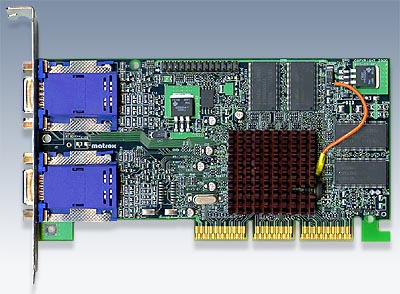X-Bit Labs heeft een review gebouwd van de Matrox G450, zowel de SDR als de DDR versie. De G450 chip wordt, in tegenstelling tot de G400, gebakken op een 0,18micron procédé maar heeft ruwweg dezelfde 3D potentie. De memory bus is wel gehalveerd naar 64-bit, maar dat wordt gecompenseerd met DDR geheugen. De DDR-versie presteert dan ook (bijna) net zo goed als de hoogbejaarde G400, maar de goedkopere G450 SDR is echt traag te noemen.
Maar goed, dat de G450 geen gamers kaarten zijn was al bekend. Toch was de reviewer niet echt te spreken over het nut van de G450, aangezien zijn prijs relatief hoog ligt. In 2D is de G450 ook al geen echte uitblinker, dus echt veel blijft er niet over. Alleen als je de beste features wil op het gebied van dual display techniek is de G450 het overwegen waard, want dit is helaas zijn enige pluspunt volgens deze conclusie:
To put it short, Matrox Millennium G450 16MB DDR and Matrox Millennium G450 16MB SDR graphics cards are not the best graphics choice you could make. They are complete losers when used in games, and these cards' 2D abilities are better than those of their predecessors only when the quality is concerned.
Despite all these criticism-provoking points, graphics cards of the kind may be interesting for those, who need to work with two displays. If we compare Dual Head and TwinView technology, which is used in NVIDIA GeForce2 MX based cards, we will have to admit that Dual Head is more advanced and smart.
The only tangible difference between G400 and G450 is higher quality of Dual Head technology, introduced in G450. From our point of view, it is at the same time the only advantage of these graphics cards.
 |

